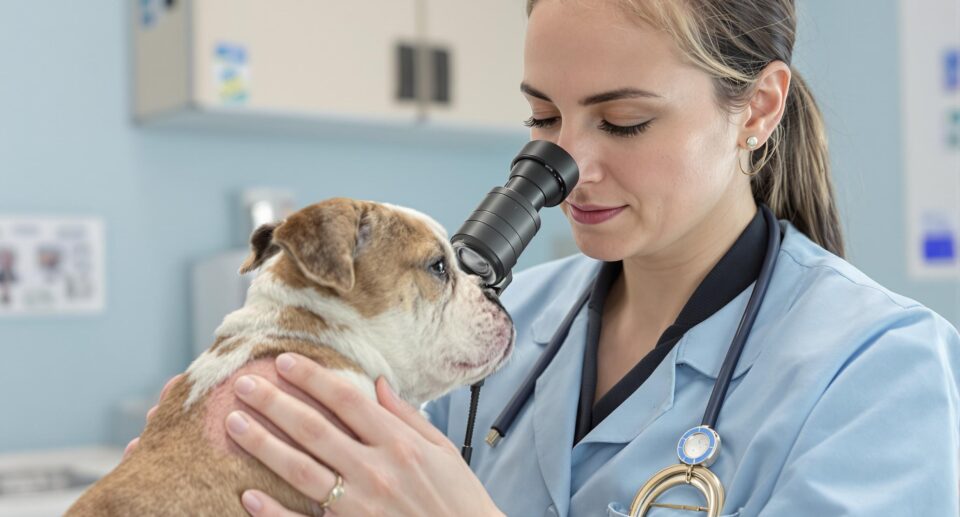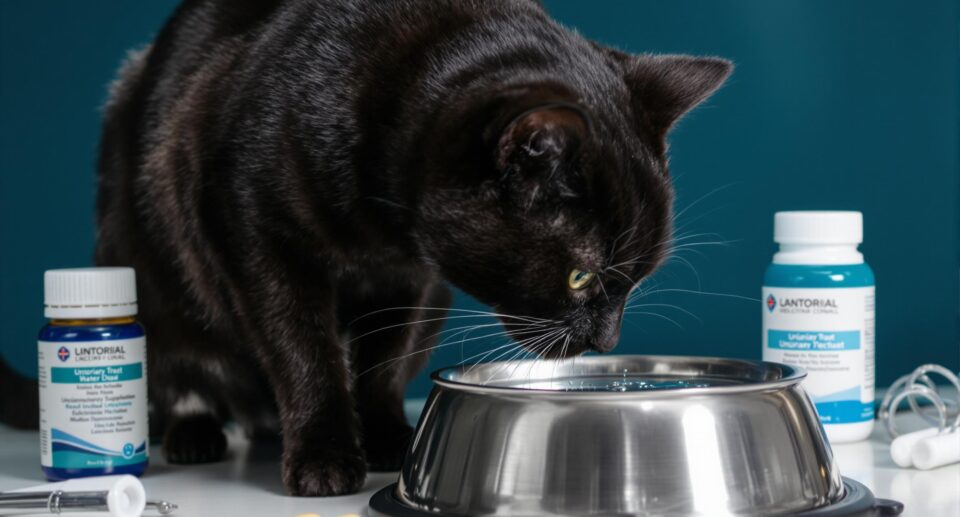What Is Demodectic Mange in Dogs?

Demodectic mange is a red, itchy skin infection that is caused by mites. The demodex mite lives on a particular host, so one form of demodex mite (demodex canis) lives on dogs and another (demodex cati) on cats. Humans have their own form of demodex mite.
The demodex mite is not rare — it is found in small numbers in the skin of most dogs and cats because the mites on their mothers normally travel to young pets shortly after birth. Thus, most healthy pets have demodex mites. The problem occurs if your pet has an immune system that does not work normally and cannot keep the mite population controlled. The mites multiply and cause intense itching. Your pet scratches and develops secondary bacterial infections with pus (pyodermatitis). Your pet’s hair falls out and leaves bald, red, weepy, infected areas. The skin may become leathery.
Demodex mites are long and thin, like a cigar, and have eight legs as adults. The mites live in hair follicles, which are pockets in the skin that hold the root of the hair. Several mites can be within one follicle. Because demodex mites are tiny—between 60 and 240 per inch — it takes a microscope to see them. Some mites are so well hidden that even with a microscope, they elude detection.
- Demodex is a mite that lives in small numbers in the skin of healthy dogs and cats without causing a problem.
- Unhealthy dogs and cats, especially those with immune problems, Cushing’s Disease, or on steroid medications can develop severe demodex infection.
- Pets with severe demodex infections should not be bred because the disease has a genetic component.
- Ivermectin, which can be used to treat demodex, causes severe illness in some herding dog breeds.
Which pets are most at risk for mange (demodex)?
Dogs are more likely to have mange (demodex) infections than are cats. Puppies and young dogs are more prone to demodex than adult dogs, but healthy puppies generally clear the infection within a few weeks. Puppies and adult dogs that are stressed or physically ill are prone to develop demodex infections. Among the stressors that suppress the immune system so that dogs develop mange are:
- Anxiety
- Estrus (being in heat)
- Pregnancy
- Nursing puppies
- Intestinal worms
- Heartworms
- Infections, such as blastomycosis
- Cancer, such as lymphosarcoma
- Hypothyroidism
- Diabetes
- Cushing’s Disease
- Dogs on steroid medications, such as Prednisone or Prednisolone
Which dog breeds are prone to mange infections?
Certain dog breeds develop mange (demodex) infections more often than other breeds. This includes purebred and mixed-bred dogs with these genetics. For example, dogs with Bulldog genetics are predisposed to demodex. These include the Boxer, American Staffordshire Terrier or Pit Bull, English Bulldog, and Boston Terrier. Other breeds predisposed to develop demodex include: Afghan Hound, Beagle, Chihuahua, Chow Chow, Collie, Dachshund, Dalmatian, Doberman Pinscher, German Shepherd, Great Dane, Old English Sheep Dog, Pointer, Pug, Shar Pei, and Shih-Tzu.
Cat breeds prone to mange infections
Cats rarely develop mange (demodex) infections unless seriously ill with a disease such as feline leukemia or diabetes. Two cat breeds and crosses of those breeds appear most prone to demodex infections: Siamese and Burmese.
Inherited tendency
Generally, the tendency to develop mange (demodex) is inherited, so dogs and cats that develop mange should not be bred. The parents, siblings, and offspring of pets with demodex should not be bred either. Occasional exceptions are made to this caveat for pets with normal immune systems that develop mange infections because they are taking high doses of steroids.
Pets with poorly functioning immune systems
Mange infections are often accompanied by other infections because demodex occurs in pets with poorly functioning immune systems. This occurs for two reasons:
- 1. Usually pets with already weak immune systems develop mange infections. These pets often have a genetic weakness in the group of white blood cells called T-cells. This is inherited and these pets can pass the tendency to develop mange infection to their offspring.
- 2. A mange infection itself is able to suppress your pet’s immune system. The more mites your pet has, the more severely the immune system is suppressed.
Pets taking steroid medications are inclined to develop mange infections because steroids also suppress the immune system. ,
Other mites
In addition to demodex mites, other mites may infect dogs and cats:
- Scabies mites (sarcoptes scabiei) tunnel into the skin and cause intense itching; they also infect people and other pets.
- Walking dandruff mites (cheyletiella) are on the surface of the skin, usually on the back and can be itchy; they also infect people and other pets.
- Fur mites (lynxacarus radovsky) are found on cats in Florida, Texas, and Hawaii.
- Red poultry mites (dermanyssus gallinae) rarely infect pets but do infect birds.
- Grain mites do not live on pets but may cause allergies in people and pets.
- Housedust mites do not live on pets but are present in homes and may cause allergies in people and pets.





